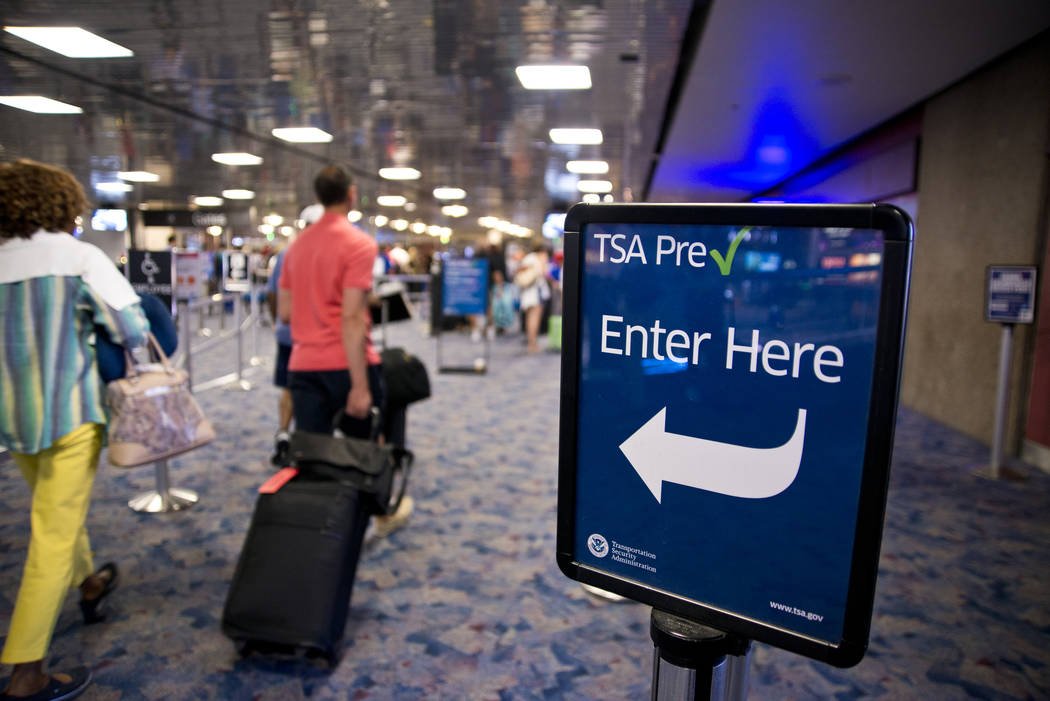Facial recognition technology tested at Las Vegas airport
As airport security technology advances, concerns have been raised about how invasive new protocols may be.
The five-member Privacy and Civil Liberties Oversight Board, founded after the Sept. 11, 2001, attack, is responsible for ensuring that new technology helps prevent terrorism while balancing the need to protect privacy and civil liberties.
The board, which is part of the federal government, was in Las Vegas to observe the Transportation Security Administration’s test of facial recognition using biometric technology at McCarran International Airport.
“Aviation security is one of the very important post-9/11 focus points,” said Adam Klein, the board chairman. “We’re very aware of the public’s interest in the rollout of facial recognition to verify the various points in the passenger journey.”
The 30-day test in the TSA pre-check lane in Terminal 3 at McCarran began in late August and ended Wednesday.
The TSA assessed its ability to compare passengers’ photo taken at the checkpoint against an image taken from the passenger’s identity document. The administration collected passengers’ photos and biographic information from their identity document and temporarily retained it for subsequent technical analysis.
“We’re aware of the questions that the members of the public, nongovernmental organizations, members of Congress and others have raised about the technology,” Klein said. “We’re looking at things like what is the security motivation for using this, what types of data are being collected, how’s it being analyzed and how is it being stored and are there any other uses of the data on the back end.”
Because the technology used was in test mode, once the facial matching result was documented, passengers were still subject to manual identity and travel-document verification by TSA personnel, regardless of the biometric matching results.
Being able to see the system in use from both the passenger and the operator side gave the board greater insight to just how the process works.
“Looking at this, we’re thinking about this particular pilot … but we’re also looking at what the future might be in terms of other uses of facial recognition and other biometrics in aviation security,” said board member Ed Felton. “ Are there conclusions that we can draw or recommendations that we can make from what the TSA should or shouldn’t be doing in the future?”
Board member Travis LeBlanc said that aside from worries about possible biases coming into play in the system, the regulatory process still needs to unfold. That process will answer many of the questions surrounding the facial recognition technology.
“For example, when people can opt out and what happens when you opt out,” LeBlanc said. “Or which data to retain, not just to use to make the actual decision, but what data are we going to keep and how long are we going to keep it, with whom you can share. What are we going to do about children?
“I think a lot of these policy calls generate the kind of questions and concerns that passengers, consumers and citizens have about privacy today.”
The group is also studying whether the technology is efficient and accurate enough to be used in more than a pilot test setting.
“Once we’ve gathered all this information … then hopefully we’ll be able to provide a judgment and provide recommendations for ensuring this technology is used in a way that adequately balances privacy and civil concerns with the very important aviation security concerns,” Klein said.
The board hopes to have a decision on the usefulness of facial recognition technology in the middle of next year, Klein said.
“We’re aware that the government is moving forward relatively quickly with this, so we understand we have to match our efforts at which these technologies are being deployed,” he said.
Contact Mick Akers at makers@reviewjournal.com or 702-387-2920. Follow @mickakers on Twitter.























